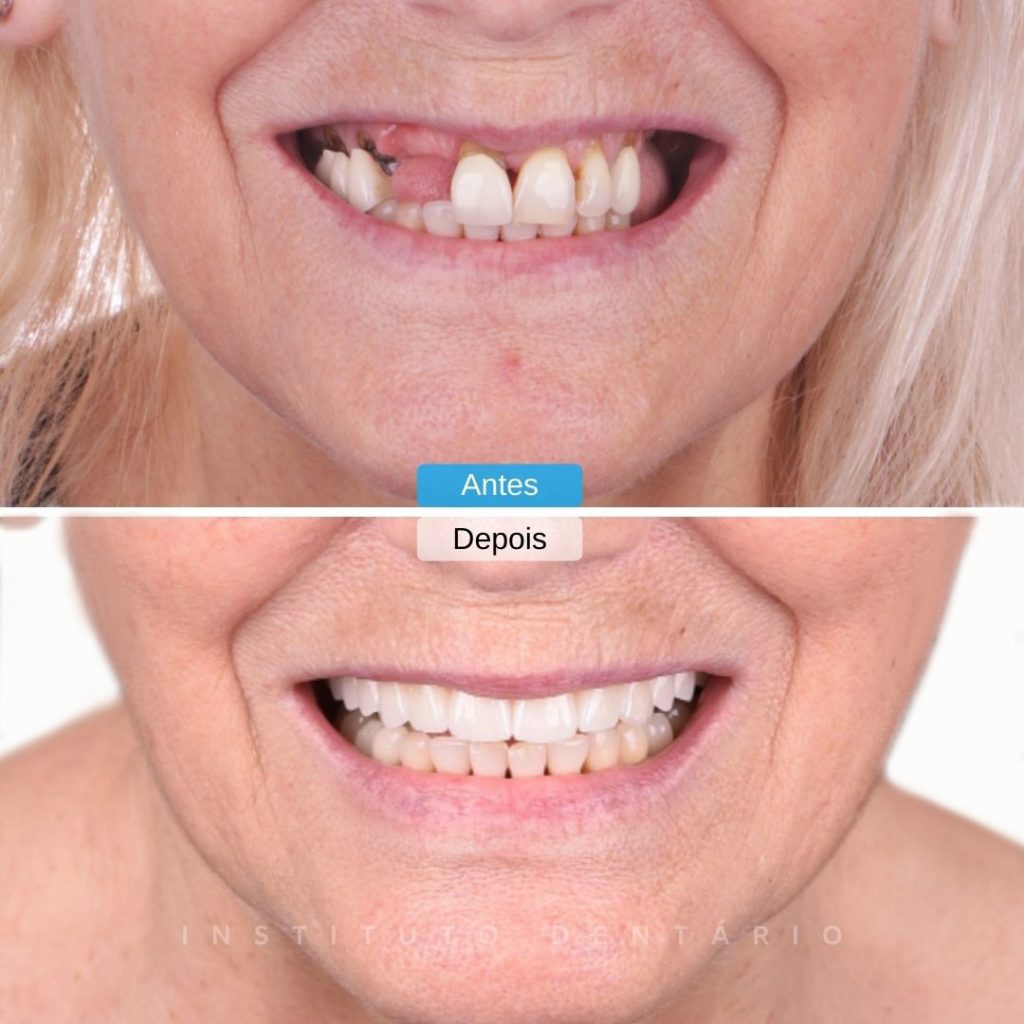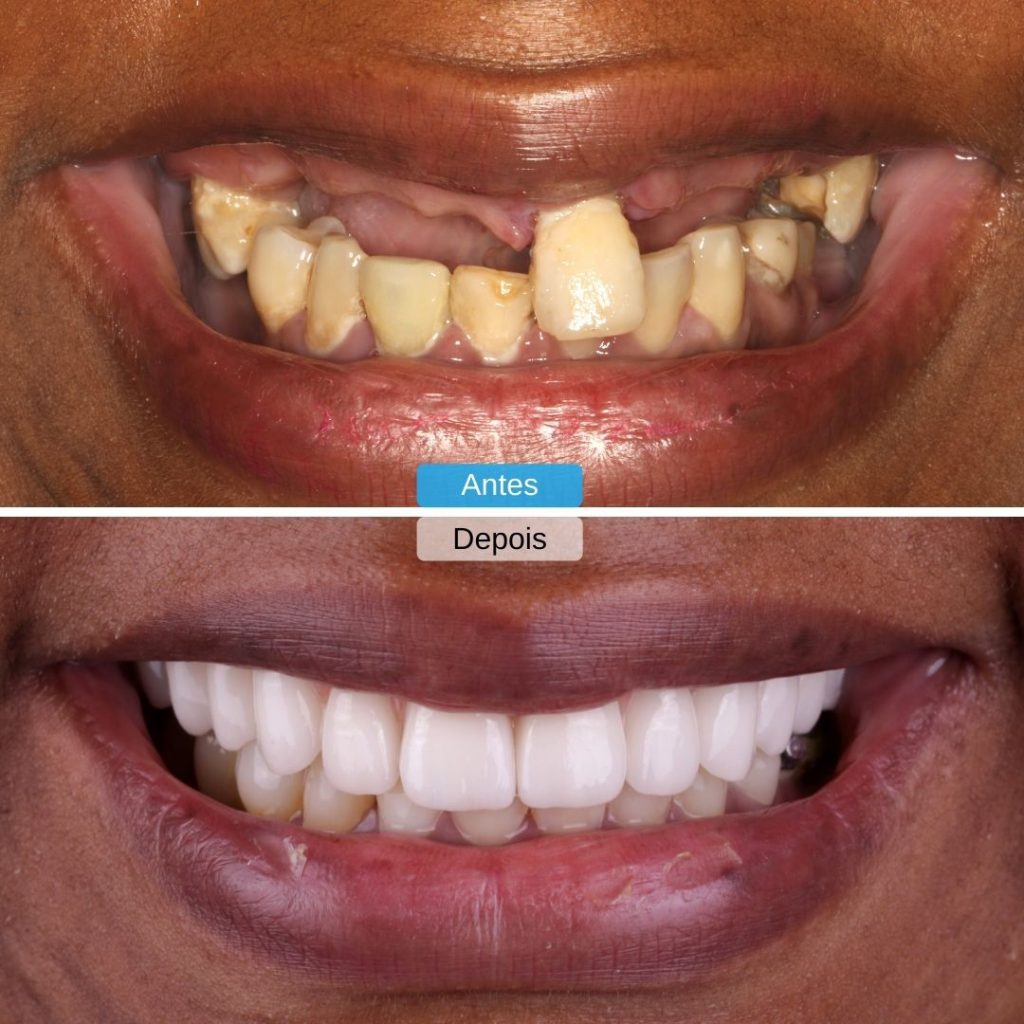Implantology
What is Implantology?
Implantology is the speciality of dentistry dedicated to rehabilitating the absence of one or more teeth by placing dental implants.
Dental implants are titanium or titanium-zirconia structures, highly biocompatible, inserted into the maxillary or mandibular bone, which have the function of replacing missing or lost tooth roots, acting as support pillars for single crowns and/or fixed bridges, and rehabilitating the aesthetics and function of natural teeth. They can replace just one tooth, multiple teeth or even rehabilitate an entire arch.
Implants work like artificial roots, replacing the natural dentition with a high degree of perfection and transferring the chewing forces back to the jawbone, so that in the end it is practically impossible to distinguish the tooth placed on the implant from a normal tooth.
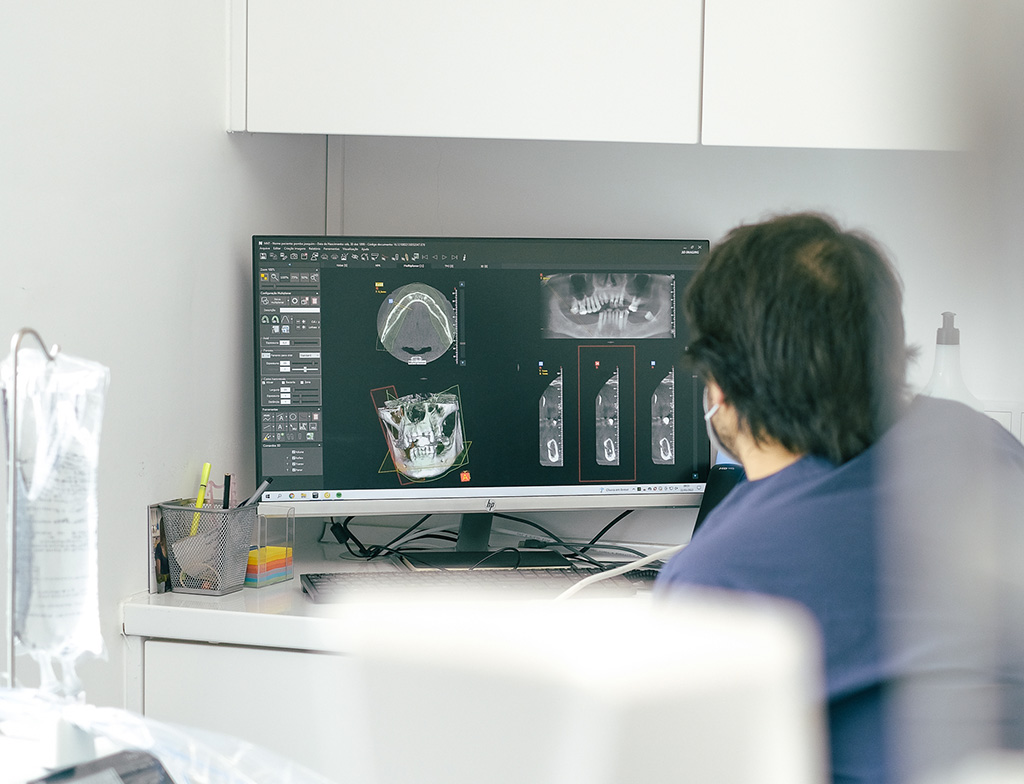
Dental implants offer numerous advantages not only from a functional and aesthetic point of view, but also in terms of patient self-confidence, allowing them to regain their quality of life and confidence in a short space of time and with high success rates.
What is Implantology?
Implantology is the speciality of dentistry dedicated to rehabilitating the absence of one or more teeth by placing dental implants.
Dental implants are titanium or titanium-zirconia structures, highly biocompatible, inserted into the maxillary or mandibular bone, which have the function of replacing missing or lost tooth roots, acting as support pillars for single crowns and/or fixed bridges, and rehabilitating the aesthetics and function of natural teeth. They can replace just one tooth, multiple teeth or even rehabilitate an entire arch.

Implants work like artificial roots, replacing the natural dentition with a high degree of perfection and transferring the chewing forces back to the jawbone, so that in the end it is practically impossible to distinguish the tooth placed on the implant from a normal tooth.
Dental implants offer numerous advantages not only from a functional and aesthetic point of view, but also in terms of patient self-confidence, allowing them to regain their quality of life and confidence in a short space of time and with high success rates.
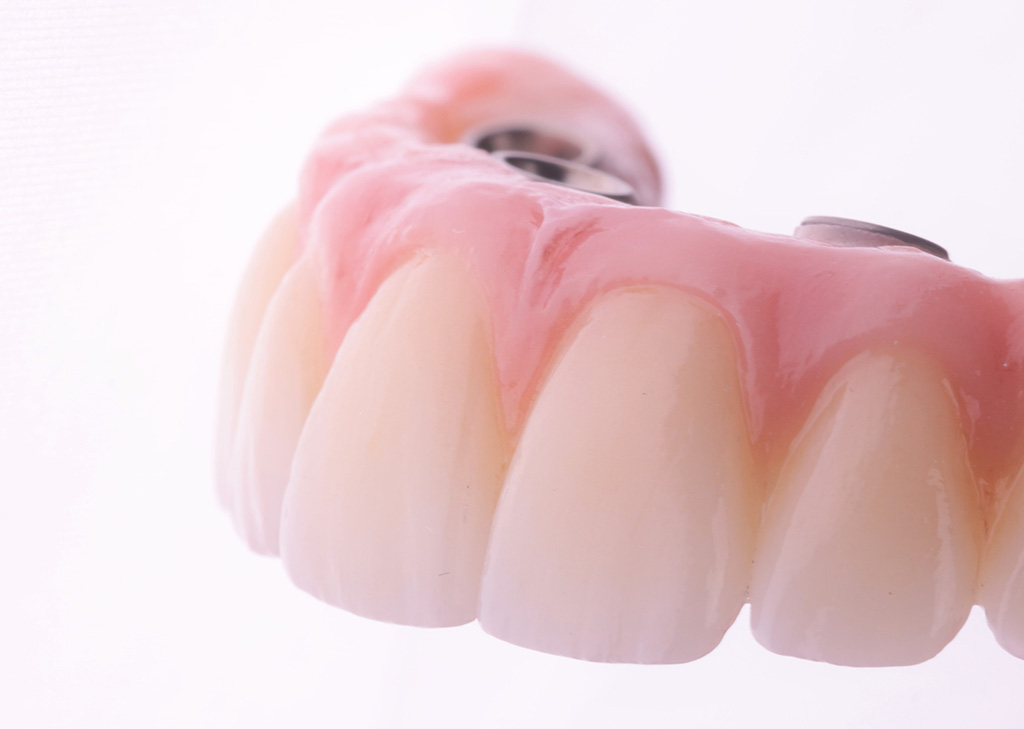
A Fixed, Long-Lasting Solution
At Instituto Dentário Alto dos Moinhos we use Straumann® implants, a renowned Swiss brand with more than 14 million implants already fitted. Straumann® implants have a high level of quality, the result of intense research and technology.
By using the best materials and implants on the market, the survival rate of implant treatments is very high, which allows us to achieve very long-lasting results.
However, the maintenance of dental implants requires that check-ups and oral hygiene appointments are carried out in order to preserve the health around the implants, and in accordance with the periodicity defined by the Dentist or Oral Hygienist.
A Fixed, Long-Lasting Solution
At Instituto Dentário Alto dos Moinhos we use Straumann® implants, a renowned Swiss brand with more than 14 million implants already fitted. Straumann® implants have a high level of quality, the result of intense research and technology.

By using the best materials and implants on the market, the survival rate of implant treatments is very high, which allows us to achieve very long-lasting results.
However, the maintenance of dental implants requires that check-ups and oral hygiene appointments are carried out in order to preserve the health around the implants, and in accordance with the periodicity defined by the Dentist or Oral Hygienist.
Benefits of Implantology
- Improved quality of life, confidence and safety
- Improved aesthetics and self-esteem
- Restoration of masticatory and phonetic capacity
- Ease of hygiene
- Maintenance of bone structure and facial aesthetics
- Maintenance of the integrity of neighbouring teeth and adjacent structures
- Greater treatment longevity
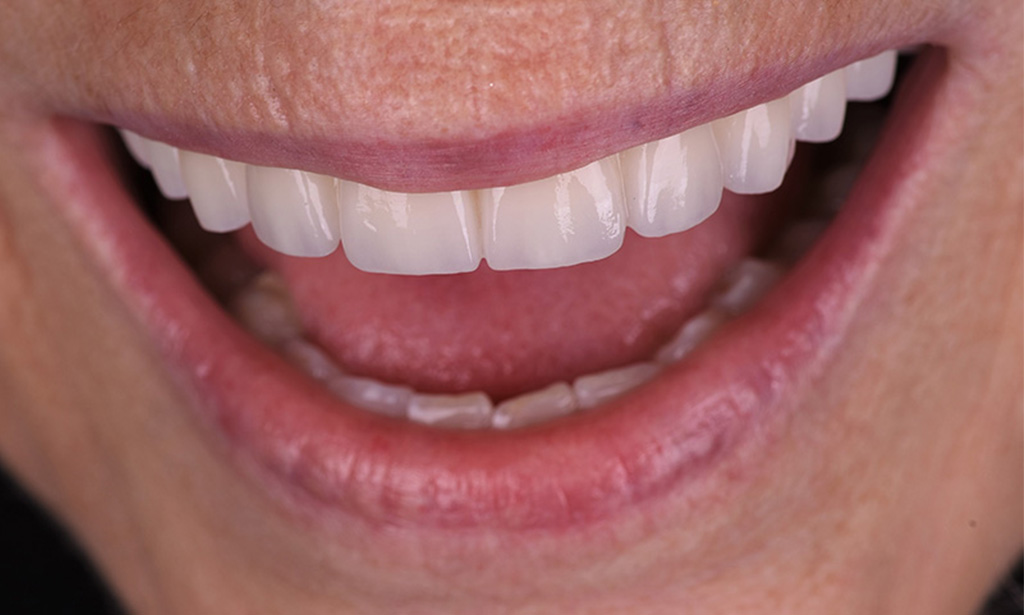
Benefits of Implantology
- Improved quality of life, confidence and safety
- Improved aesthetics and self-esteem
- Restoration of masticatory and phonetic capacity
- Ease of hygiene
- Maintenance of bone structure and facial aesthetics
- Maintenance of the integrity of neighbouring teeth and adjacent structures
- Greater treatment longevity

Types of Implantology treatments
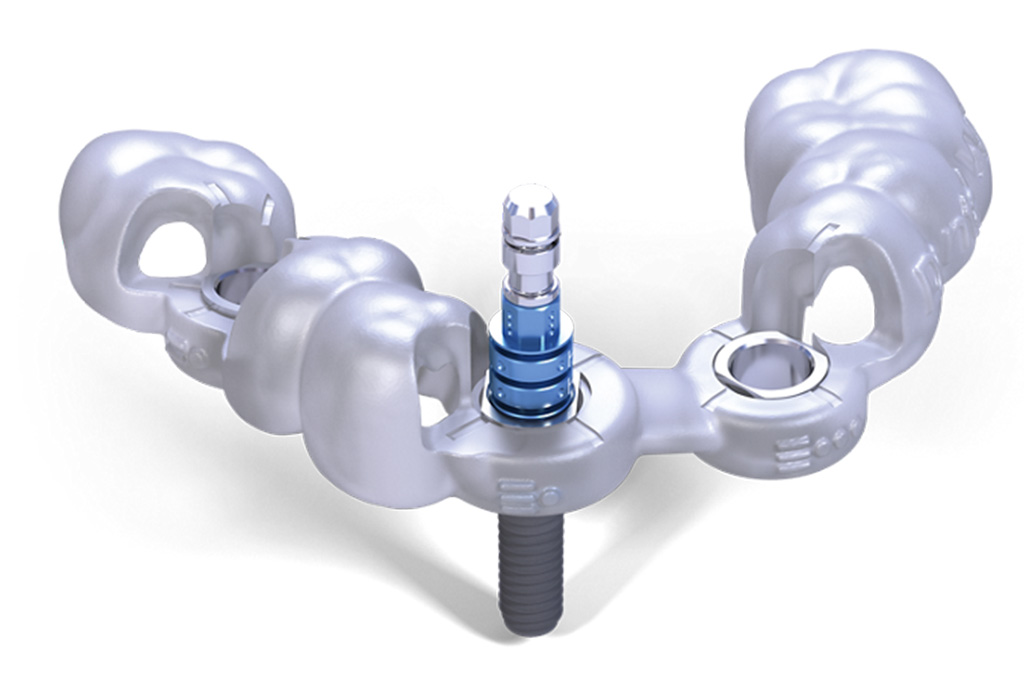
Unitary Implants
It is the ideal solution for replacing a missing tooth, acting as a support for the placement of a crown that will perfectly replace the natural tooth, both in terms of chewing and aesthetics.
In the case of two or more missing teeth, the ideal solution is to replace them with a bridge supported by dental implants.
Both single crowns and bridges are made to match the colour and contour of the natural teeth, so that the rehabilitation is as harmonious and natural as possible.
This solution also allows adjacent healthy teeth to be preserved as there is no need to wear them down.
Types of Implantology treatments
Unitary Implants
It is the ideal solution for replacing a missing tooth, acting as a support for the placement of a crown that will perfectly replace the natural tooth, both in terms of chewing and aesthetics.

In the case of two or more missing teeth, the ideal solution is to replace them with a bridge supported by dental implants.
Both single crowns and bridges are made to match the colour and contour of the natural teeth, so that the rehabilitation is as harmonious and natural as possible.
This solution also allows adjacent healthy teeth to be preserved as there is no need to wear them down.
“Teeth in 1 Day”
This solution involves placing implants and a fixed prosthesis on the same day.
Also known as immediate loading or All-on-4®, it is a treatment option for the rehabilitation of a completely edentulous jawbone or one in which the remaining dental parts are irreparably compromised.
It involves the placement of 4 implants in the same jawbone, through a quick and non-invasive surgical procedure, which will support a fixed prosthesis capable of replicating the aesthetics and function of the natural dentition.
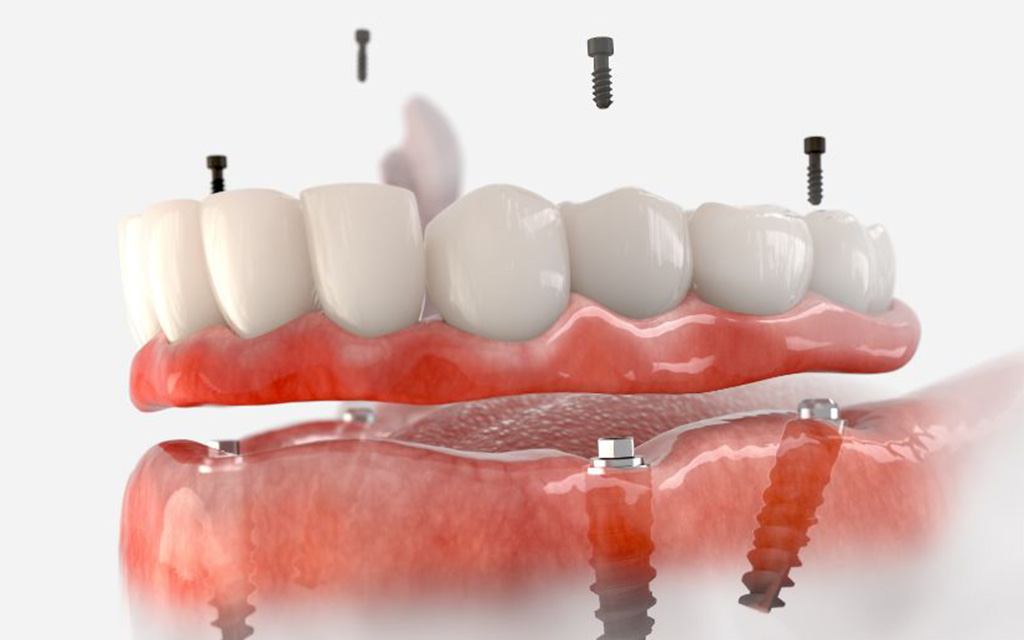
“Teeth in 1 Day”
This solution involves placing implants and a fixed prosthesis on the same day.

Also known as immediate loading or All-on-4®, it is a treatment option for the rehabilitation of a completely edentulous jawbone or one in which the remaining dental parts are irreparably compromised.
It involves the placement of 4 implants in the same jawbone, through a quick and non-invasive surgical procedure, which will support a fixed prosthesis capable of replicating the aesthetics and function of the natural dentition.
Step-by-step of Implant placement
1. Pre-Surgical Assessment and Planning Consultation
At Instituto Dentário Alto dos Moinhos we begin with a clinical and radiographic assessment, where the patient’s oral health is determined and an orthopantomography is carried out, followed by a CBCT (Computerised Tomography) to assess the bone structures.
The treatment plan that best suits the patient’s case is then presented, and the techniques to be used are defined, as well as the type, ideal position and number of dental implants required. Nowadays it is possible to pre-plan the entire surgery by analysing the case three-dimensionally and placing the implants digitally.
2. Anaesthesia and/or Conscious Sedation
The surgery to place dental implants is carried out in a controlled environment and in the greatest possible comfort, using local anaesthesia.
It is a simplified, minimally invasive and short surgical procedure. In patients with greater anxiety, a conscious sedation supplement may also be used, which allows patients to be in a minimally depressed state of consciousness, reducing fear and anxiety symptoms.
3. Incision in the gum and preparation of the bone bed
The surgical procedure itself begins with a small incision in the gums to make the bone visible. If there are non-viable teeth in the oral cavity, they are also extracted according to the treatment plan.
The bone is then prepared so that the implant can be placed. No pain is felt under local anaesthetic.
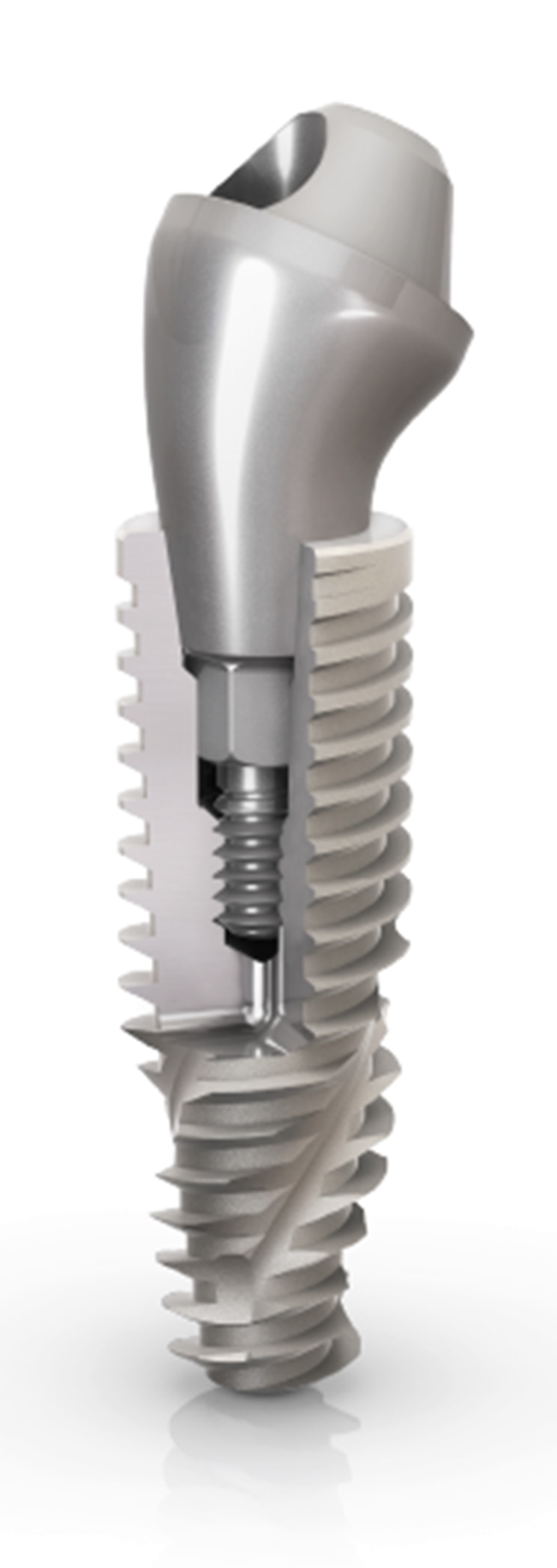
4. Placement of Dental Implants
After bone preparation, the implants are placed in each of the sites created. A healing cap may be placed over the implant or a temporary crown screwed on.
Finally, the gums are sutured and the incisions closed, protecting the tissues from the accumulation of food residue.
5. Post-Surgery
After surgery, post-operative care will be indicated, as well as prescribing all medication for the most comfortable and painless post-operative period possible.
You will also be given full instructions on how to maintain excellent oral hygiene during the post-operative phase and subsequent check-ups will be scheduled.
Step-by-step of Implant placement
1. Pre-Surgical Assessment and Planning Consultation
At Instituto Dentário Alto dos Moinhos we begin with a clinical and radiographic assessment, where the patient’s oral health is determined and an orthopantomography is carried out, followed by a CBCT (Computerised Tomography) to assess the bone structures.
The treatment plan that best suits the patient’s case is then presented, and the techniques to be used are defined, as well as the type, ideal position and number of dental implants required. Nowadays it is possible to pre-plan the entire surgery by analysing the case three-dimensionally and placing the implants digitally.

2. Anaesthesia and/or Conscious Sedation
The surgery to place dental implants is carried out in a controlled environment and in the greatest possible comfort, using local anaesthesia.
It is a simplified, minimally invasive and short surgical procedure. In patients with greater anxiety, a conscious sedation supplement may also be used, which allows patients to be in a minimally depressed state of consciousness, reducing fear and anxiety symptoms.
3. Incision in the gum and preparation of the bone bed
The surgical procedure itself begins with a small incision in the gums to make the bone visible. If there are non-viable teeth in the oral cavity, they are also extracted according to the treatment plan.
The bone is then prepared so that the implant can be placed. No pain is felt under local anaesthetic.
4. Placement of Dental Implants
After bone preparation, the implants are placed in each of the sites created. A healing cap may be placed over the implant or a temporary crown screwed on.
Finally, the gums are sutured and the incisions closed, protecting the tissues from the accumulation of food residue.
5. Post-Surgery
After surgery, post-operative care will be indicated, as well as prescribing all medication for the most comfortable and painless post-operative period possible.
You will also be given full instructions on how to maintain excellent oral hygiene during the post-operative phase and subsequent check-ups will be scheduled.
Faq
In general, anyone can have implants fitted as long as they are in good general health and, as such, diabetics with adequate glycaemic control and smokers can have implant surgery.
However, they should be informed and warned of the risks in these specific cases, which are greater than in people without these characteristics. It is also recommended that these patients with risk factors receive periodic follow-ups at shorter intervals than usual.
All patients who are candidates for implant surgery should undergo a clinical and radiographic assessment to evaluate the availability of bone mass. Even in patients with very low bone availability, techniques such as All-on-4® can be used to successfully place implants.
There are also techniques such as bone grafting and the use of biomaterials, and maxillary sinus elevation that can be used in cases of severe bone resorption.
In patients with good general and oral health, the effectiveness of implant treatment has high success rates, above 98 per cent.
Of course, as with other medical and medical-dental treatments, the effectiveness of dental implant treatment depends on a number of factors, such as individual anatomical and physiological characteristics, oral hygiene habits and smoking habits, among others.
CONTACT
Schedule yout Appointment
Leave your contact details and we’ll book your appointment within 24 hours.



